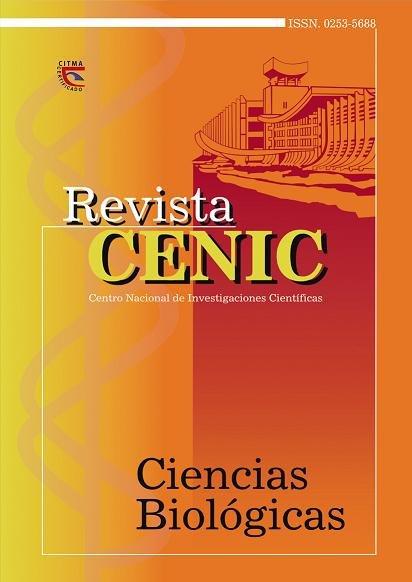Mad cow disease: its influence on obtaining of the main antigen of Haemophilus influenzae type B
Abstract
The fundamental parameters in the process of obtaining capsular
polysaccharide of Haemophilus influenzae type b such as: culture medium, type of
hemin, as factor of growth and the expression of the capsule polysaccharide by the
strains were evaluated. The evaluated cultures media were: infusion brain heart,
Müeller Hinton and a variant of modified Frantz. The evaluated hemin was from
the different commercial houses: Fluka (bovine origin), Sigma (equine origin), ICN
(pig origin) and Calbiochem (bovine origin). The evaluated strains were H1am/
90, H1am/97, H2am/96, Eagan and 170 non-typable, as negative control. In these
experiments the concentration of capsular polysaccharide was determined by
Finn’s method. The results demonstrated that variant of modified Frantz allowed
a bacterial growth four times higher than other culture media (p < 0,05).
In addition this culture medium allowed to increase the expression capsular
polysaccharide regarding the other culture media. This culture medium completes
the WHO regulations satisfactorily. The use of hemin from Fluka commercial
house reflected an increase of 17,2 % over the remaining ones (p < 0,05). The
hemin of Sigma and ICN threw satisfactory results too. However the use of hemin
from Fluka and Calbiochem houses is contraindicated by its origin. These results
allow the use of hemin from Sigma and ICN in the culture of the Haemophilus
influenzae type b. On the other hand, the strain H1am/97 showed a superior expression
of capsular polysaccharide (p < 0,05) among those evaluated, demonstrating
the variability of the expression of polysaccharide from the strains evaluated.
Downloads

Downloads
Published
How to Cite
Issue
Section
License

This work is licensed under a Creative Commons Attribution-NonCommercial-ShareAlike 4.0 International License.
Los autores que publican en esta revista están de acuerdo con los siguientes términos:
Los autores conservan los derechos de autor y garantizan a la revista el derecho de ser la primera publicación del trabajo al igual que licenciado bajo una Creative Commons Atribución-NoComercial-CompartirIgual 4.0 Internacional que permite a otros compartir el trabajo con un reconocimiento de la autoría del trabajo y la publicación inicial en esta revista.
Los autores pueden establecer por separado acuerdos adicionales para la distribución no exclusiva de la versión de la obra publicada en la revista (por ejemplo, situarlo en un repositorio institucional o publicarlo en un libro), con un reconocimiento de su publicación inicial en esta revista.
Se permite y se anima a los autores a difundir sus trabajos electrónicamente (por ejemplo, en repositorios institucionales o en su propio sitio web) antes y durante el proceso de envío, ya que puede dar lugar a intercambios productivos, así como a una citación más temprana y mayor de los trabajos publicados (Véase The Effect of Open Access) (en inglés).














